After being drenched and underwhelmed by daytime maxima of 13°C during July and August our early September sunshine and warmth is a serious restorative. Today we are looking at 22°C to 26°C; yesterday temperatures climbed above 27°C in some areas; that’s more like it!
Met Eireann tells us that July 2023 was “very wet, cool and dull.” In fact, it was the wettest July on record. The highest temperature recorded in July was on one day, July 7th, and was 24.1 °C in Fanad, County Donegal. While August had better weather, it was not a classic summer month. Described as “mild and changeable” the temperatures were above average nearly everywhere but so was rainfall. Poor Newport in County Mayo had 29 wet days during August!
This doesn’t look like our butterflies should have had a good year, given what our ‘summer’ weather was like, and if I include June this was much better (warmest June on record at most weather stations, with average rainfall). Athenry, County Galway and Shannon Airport, County Clare experienced 27 consecutive days with maximum air temperatures > 20.0 °C, ending on Saturday 24 June. Some of our summer flying butterflies had a spectacular year, with some very high abundance reported to Butterfly Conservation Ireland.
On September 3rd, for example, 246 Small Tortoiseshells were reported from Lullymore, and hundreds of Small Whites and hundreds of Small Tortoiseshells were seen on a wildlife-friendly farm near Maynooth. Red Admirals and Commas are booming too, Green-veined Whites, which love moist, damp habitats, are up, and so are Meadow Brown and Ringlet populations. Holly Blue seems to be thriving and spreading. Early in August, I counted 91 Brimstones just in a small area in Lullybeg; there must have been hundreds of this highly localised butterfly in the bogland in northwest Kildare.
So what can we expect this month? Top of the list is the Small Tortoiseshell, which is everywhere now, even in the Sutton area in Dublin, where the butterfly has gone into a second brood for the first time in many years, thanks probably for July’s bountiful rain and the boost to Stinging Nettles.
The highest numbers of the year are present now but this abundance will be brief. While they are busy feeding, they gain weight and their flight is considerably slower, especially in the cooler temperatures expected as September advances. It is risky to stay on the wing for too long, as dragonflies and birds are eager predators of butterflies. In the past few days, Small Tortoiseshells have entered buildings to look for a secluded nook to pass the winter in. In fact, some will find a spot, retain a topographical memory of its location, and fly out to resume feeding, safe in the knowledge that they know where they will hunker down. Experiments carried out in England show that the Small Tortoiseshell relies on its memory to relocate important sites.
They do not always choose well. A centrally heated building will awaken them in autumn, and deceive the butterfly into the idea that spring is here. Capture and release is not the advised approach; capture and relocation in a cool place is the best policy. A plastic lidded box lined with absorbent kitchen roll in the bottom of the fridge is a good place; no air holes are needed. Release them in March when a warm spell, predicted to last a few days, arrives.
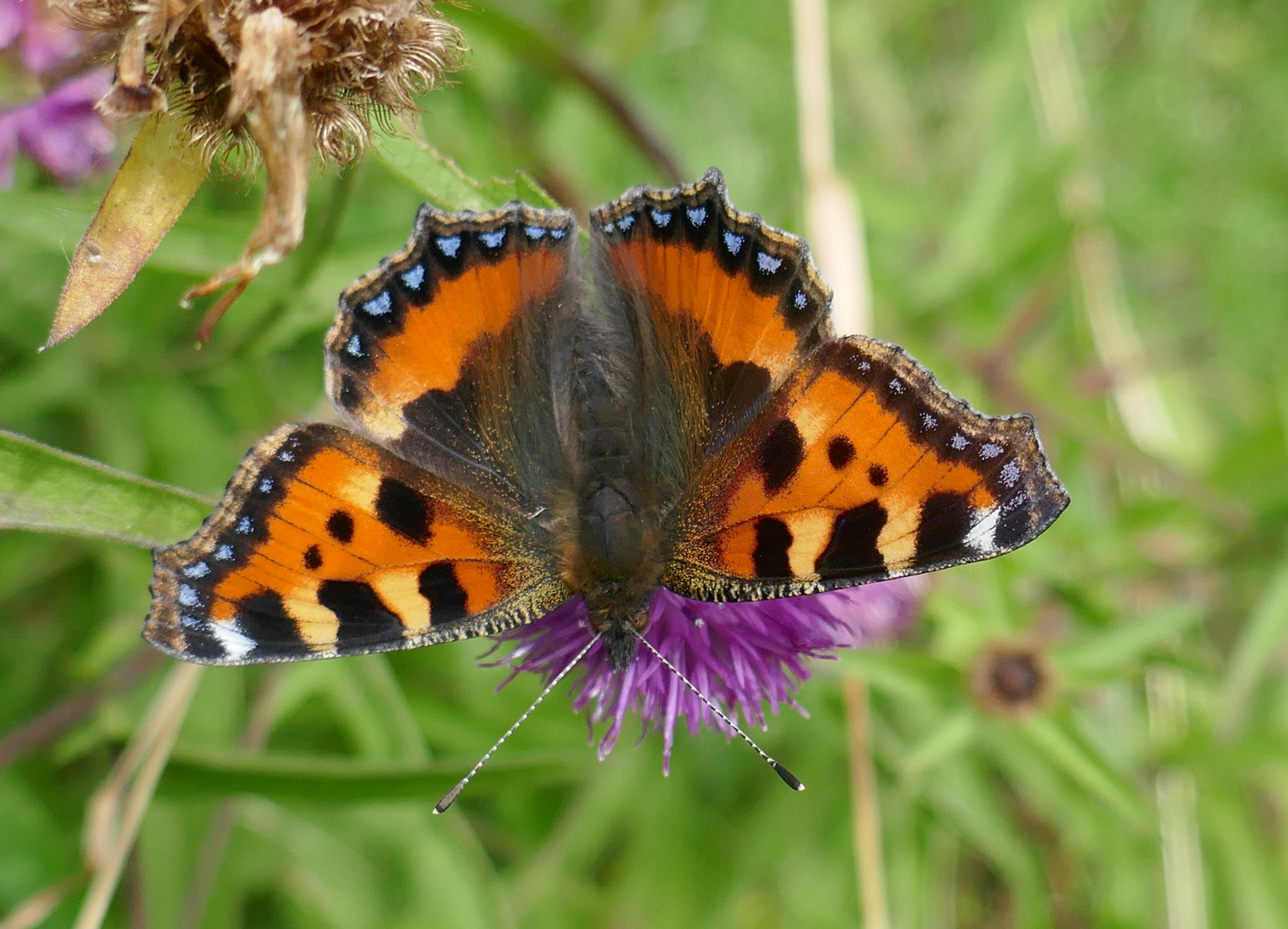
By contrast with the Small Tortoiseshell boom, Peacocks on the wing are few in number. Most are in hibernation and will stay put despite the blandishments of high September temperatures and nectar. This poor Peacock looks the way we might feel after a bad day. Remarkably, this butterfly flew away, albeit awkwardly, after the photo was taken. Staying out late is risky, as pointed out earlier!
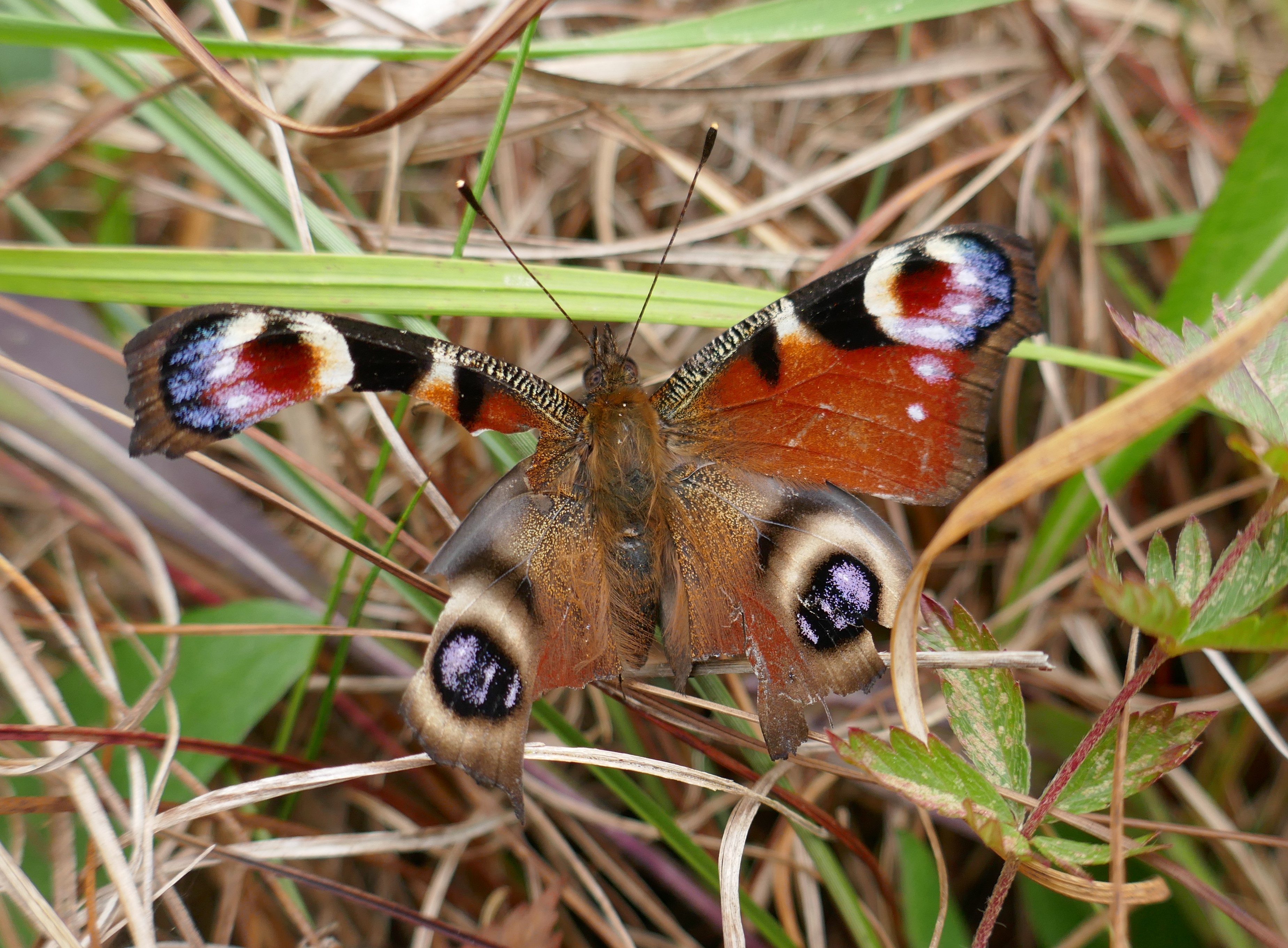
Another butterfly that passes the winter in the adult stage, the Brimstone, is similarly out there in greatly reduced abundance. Most of them are concealed in evergreen foliage, blending with their leaflike wings to aid blending. We will see a few still feeding, and these are wisely very close to over-wintering cover.
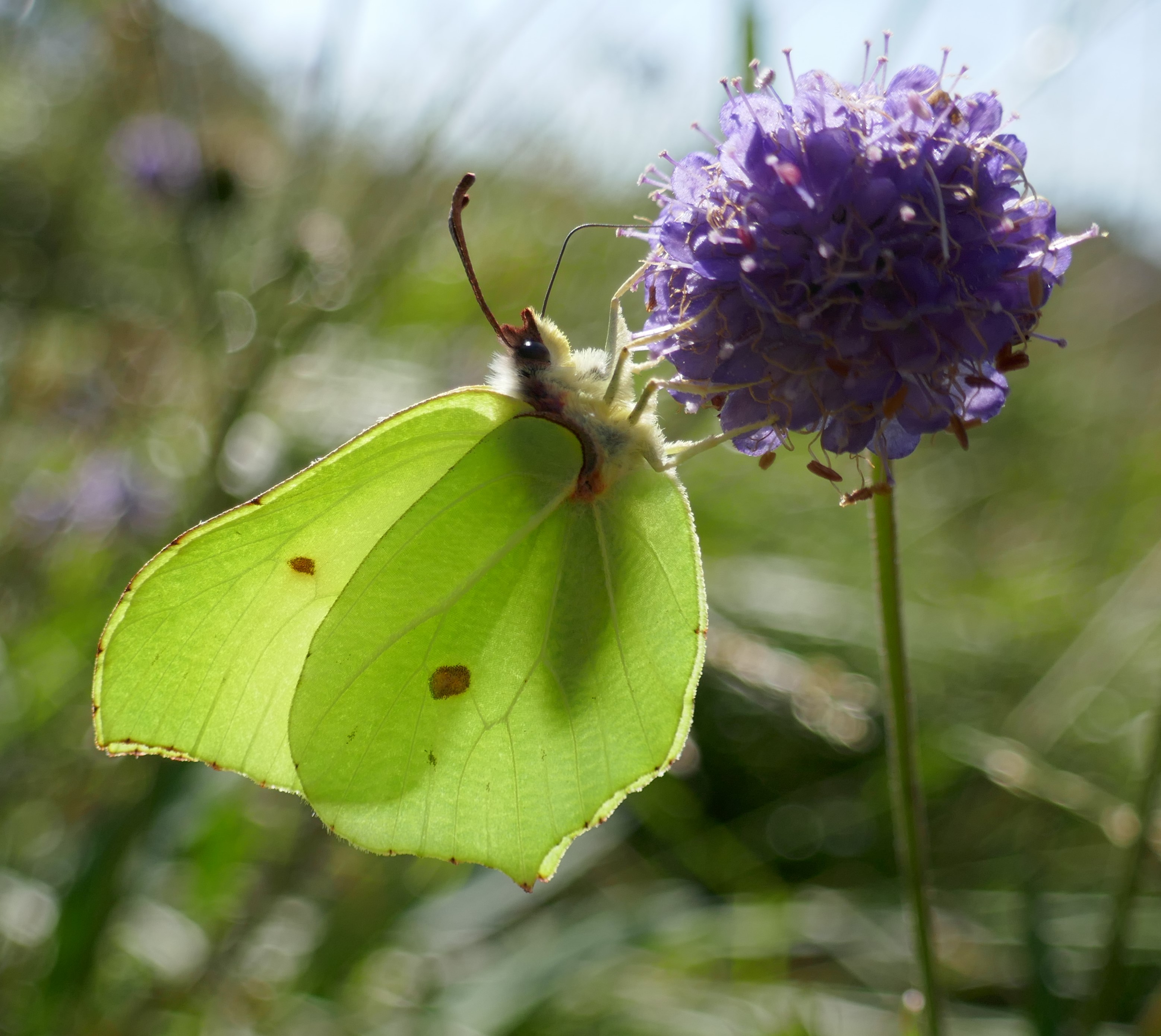
Green-veined White butterflies really suffer from droughts, but not this year. Here is a male on Devil’s-bit Scabious, his forewings packed with citral (C10H16O), a pheromone used to seduce a female. It is a powerful, sweet fragrance, easily detected by a human, so it must be an all-enveloping experience for a female Green-veined White. This butterfly is still breeding and the species will pass the winter as a caterpillar.
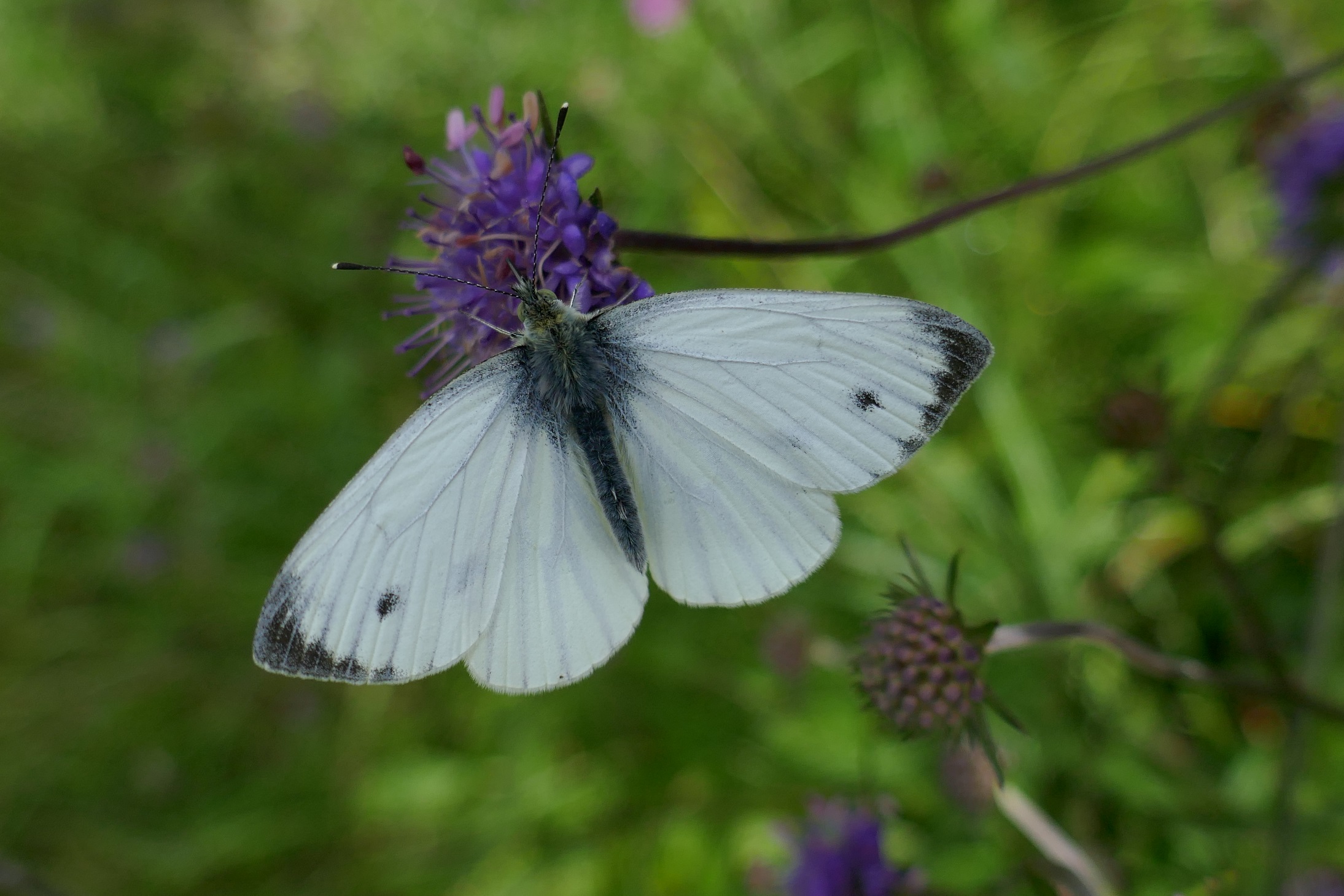
And now for something different! The next two butterflies are migrants. Unlike our resident butterflies, these two are not cold-adapted species. Unlike our resident natives, these do not have a rest phase in their life cycle and are continuously brooded, which means they breed and grow throughout the year. In more technical language, they do not undergo a diapause phase. If a butterfly cannot delay breeding, it requires the correct conditions to reproduce throughout the year. These conditions are not currently available in most of northern Europe, so an escape strategy must be applied. Migration is a way to avoid the onset of unsuitable conditions. In spring and summer, the heat in North Africa and parts of Southern Europe drives some migrants north to find the conditions needed.
The Red Admiral is our most regular migrant butterfly. It occurs in Ireland from about March to November and they leave during the autumn months. When the herbaceous flowers are gone, it uses ivy nectar, sap runs and overripe fruit for sustenance. There are still Red Admiral larvae on nettles so we will see the adults for some weeks yet.

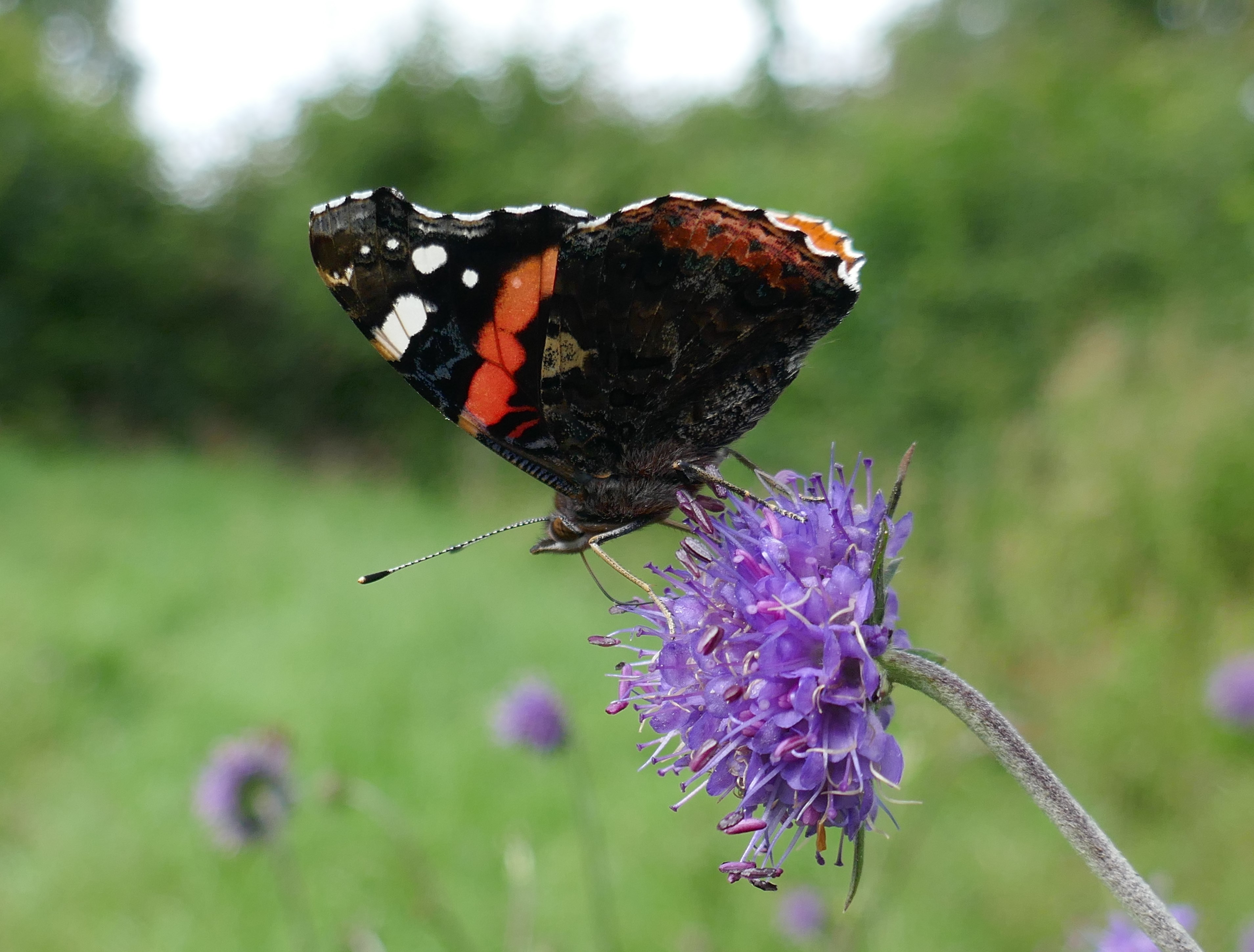
The lovely Clouded Yellow is a visitor too, but in smaller numbers and often later in the year, especially during September and October. In some years a mass arrival followed by breeding occurs. In these years, they arrive earlier, usually from April onward.
In years when they arrive later, the Clouded Yellow does attempt to breed, but it is likely that the attempts fail as the temperatures drop. But the butterfly is a delight to see whenever it appears. This female was seen in Lullymore by Pat Wyse and Fionnuala Parnell, enjoy!
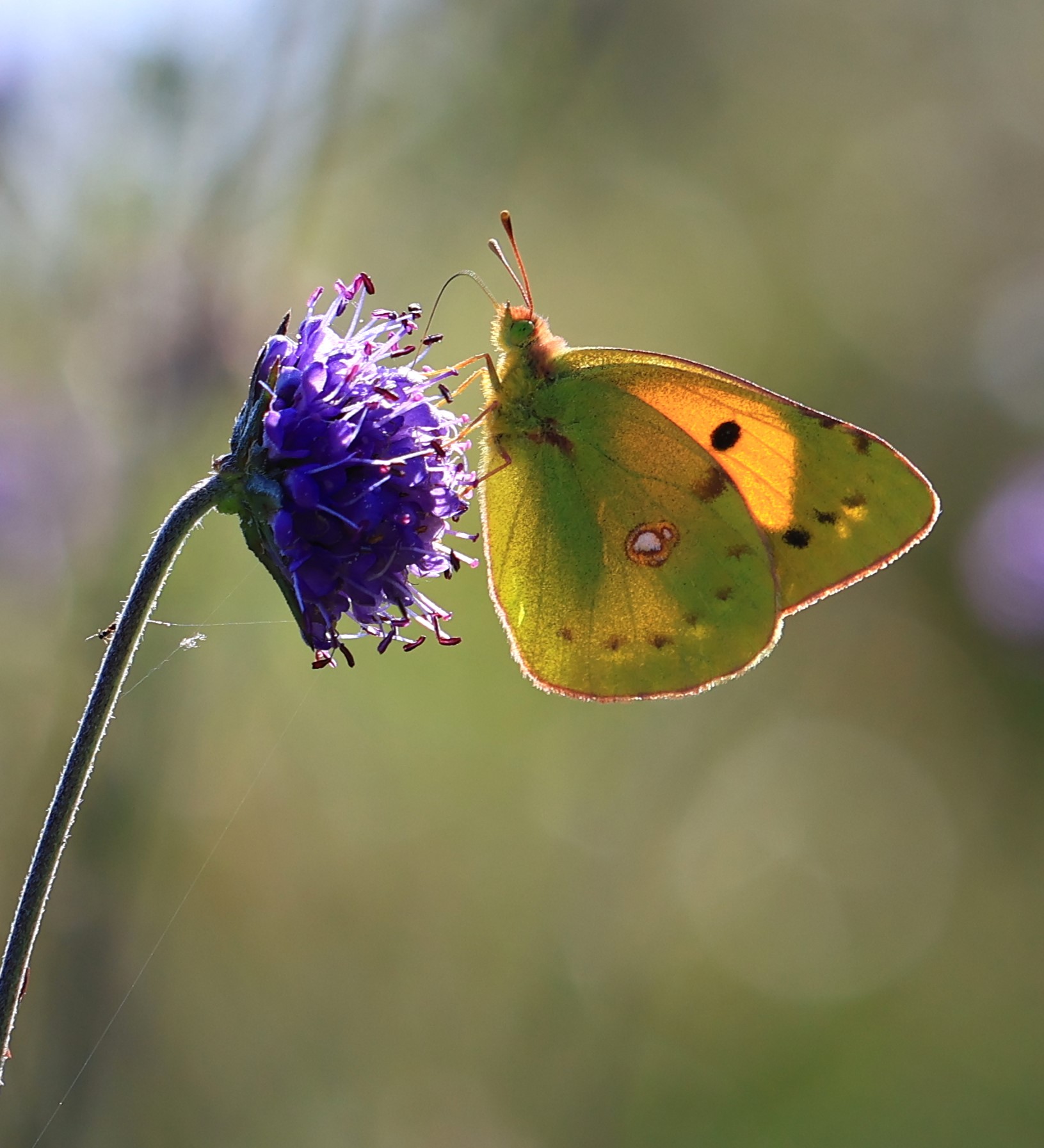
Photo Pat Wyse.
Back to our resident butterflies, the Comma is beginning to hatch its second generation which flies during autumn. This makes it unique among our butterflies. We will say more about the Comma in our October post, but keep a close eye on ripe blackberries and ivy in the coming weeks.

The heatwave during the first week in September has coaxed migrants from southern Europe to journey north. This Vestal is one of four to visit a garden in County Meath on 7th September. The colour of this moth is strongly influenced by the temperature experienced by the pupa with bright specimens like this one the result of hotter conditions, suggesting that this one is from the Mediterranean area of Europe or North Africa. It is mainly a nocturnal moth but can be found on grass stalks during the day.
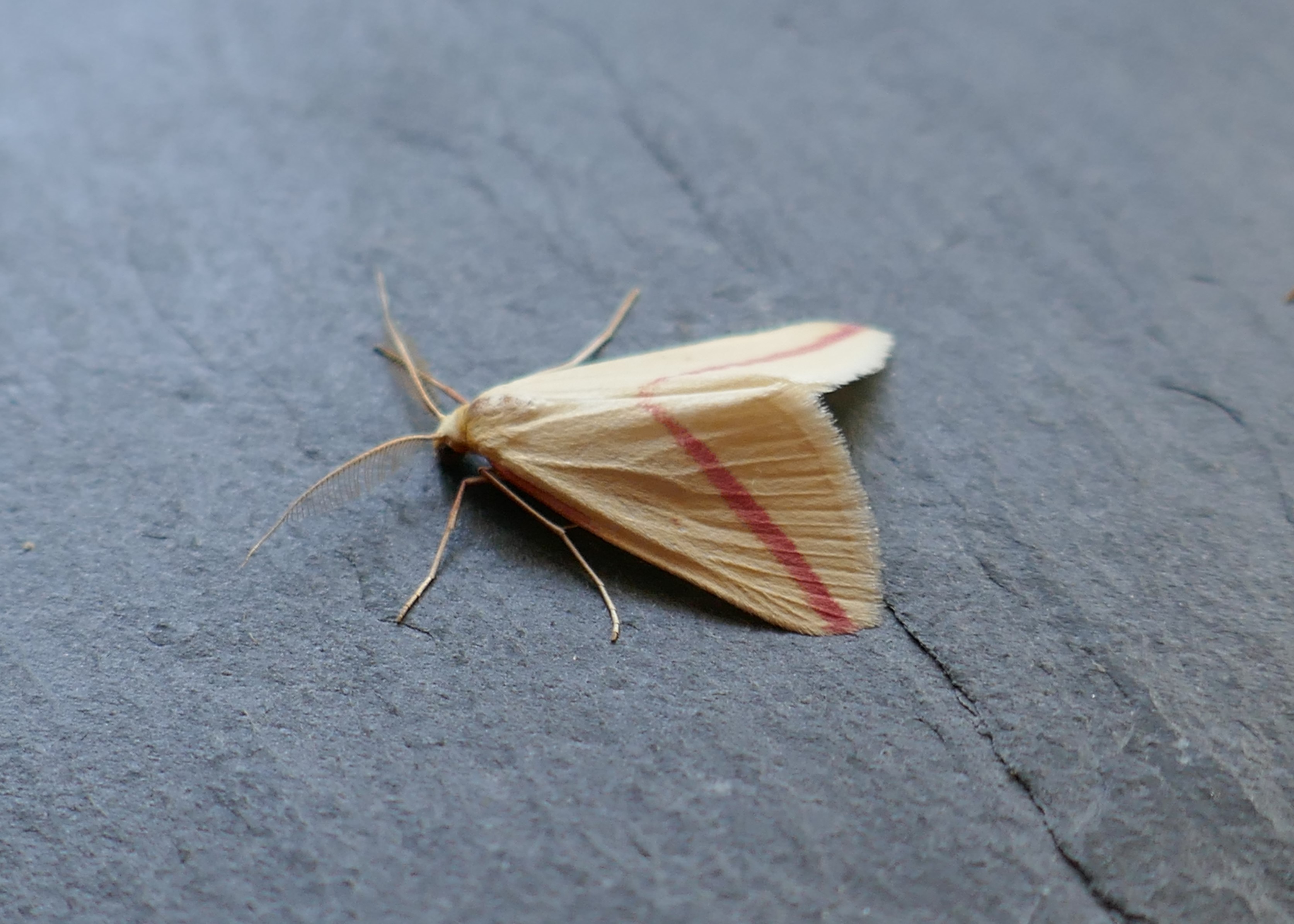
All photos by J. Harding except Clouded Yellow P. Wyse.

